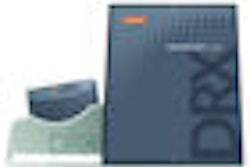A group of Israeli researchers compared a digital radiography (DR) system to analog film-screen x-ray for small-bowel follow-through studies and found the DR system superior in image quality, radiation dose, and workflow.
While the benefits of DR have been well-documented in areas such as chest imaging and skeletal radiography, fewer studies exist on its use for small-bowel follow-through (SBFT) exams, according to a research team led by Dr. Olga Brook of Rambam Health Care Campus in Haifa. Brook and colleagues sought to compare DR for SBFT to film-screen radiography, and the group published their results in the October 2008 issue of Computerized Medical Imaging and Graphics (Vol. 32:7, pp. 531-538).
For the prospective study, the Rambam team looked at a population of 11 consecutive patients referred for SBFT exams, ages 18-27 years old. Patients underwent a standard SBFT preparation regimen, including an initial overhead film and ingestion of oral contrast, and then an overhead film every 20-30 minutes, with the option of spot-film fluorography.
For each of the studies, one of the intermediate radiographs was taken with a DR system (SmartRad, CMT Medical Technologies, Yokneam, Israel) while another was taken using a film-screen system (Siemens Healthcare, Erlangen, Germany). Images were output to film for review but were distinguishable by their "inherent properties," such as spatial and contrast resolution, according to the authors,
Exam parameters were as follows: identical focus size, source-to-image distance of 100 cm, 102 kV, and automatic exposure control. The analog system worked with a film-speed combination of 400, and the DR unit operated at an equivalent of 400 film speed. In five cases, DR images were acquired prior to film-screen, and in six cases the opposite was true.
The researchers then assessed both types of studies based on three criteria: image quality, radiation dose, and impact on workflow. For the image quality test, a panel of five attending radiologists (three of whom were gastrointestinal specialists) and four resident radiologists compared the images and rated them for overall image quality, intestinal mucosa definition, and bone visualization.
Radiation dose measurements were based on kV, tube current (mA), exposure time (ms), and mAs parameters, as well as a dose meter used to calculate entrance skin dose exposure. Workflow was calculated as the time required for the radiologic technologist to obtain a radiograph from the time the patient entered the room to the production of a final image.
DR scores well
Brook and colleagues found that every radiologist gave DR higher marks for image quality relative to film-screen x-ray, and the difference was statistically significant for the vast majority. On a five-point scale, with five representing the highest quality, DR received an overall median grade of 4.5, versus 3.3 for film-screen. Mean and median average scores for the three image quality criteria are as follows (p < 0.001 for all scores):
Image quality scores, DR versus film-screen x-ray
|
DR also bested its analog counterpart in terms of radiation dose, with the team's calculations indicating that DR produced 41% less dose for SBFT exams compared to film-screen. The average DR dose was 0.93 ± 0.54 cGy, compared to 1.58 ± 0.63 cGy for film-screen.
Finally, DR also conferred workflow advantages over film-screen. The average time it took for technologists to complete a DR-based SBFT exam was 3.5 ± 1.3 minutes, compared to 5.5 ± 1.5 minutes for analog SBFT. That represents a 37% reduction, according to the authors.
In conclusion, the team stated that the study confirmed that the advantages found for DR in areas like chest imaging also translate to SBFT exams. Although there were some limitations to the research, such as the study's small sample size, DR could have performed even better if images were reviewed on soft-copy displays rather than film, due to the image manipulation tools available on workstations, they wrote.
By Brian Casey
AuntMinnie.com staff writer
September 22, 2008
Related Reading
Radiation exposure increased in some inflammatory bowel disease patients, September 10, 2008
Screening rules may miss cancer in people with IBD, September 5, 2008
3D reveals what axial images can't in small-bowel CT, November 15, 2006
CT enterography can determine Crohn's disease severity, November 7, 2006
Capsule endoscopy helpful in identifying, managing small bowel tumors, November 2, 2006
Copyright © 2008 AuntMinnie.com



















